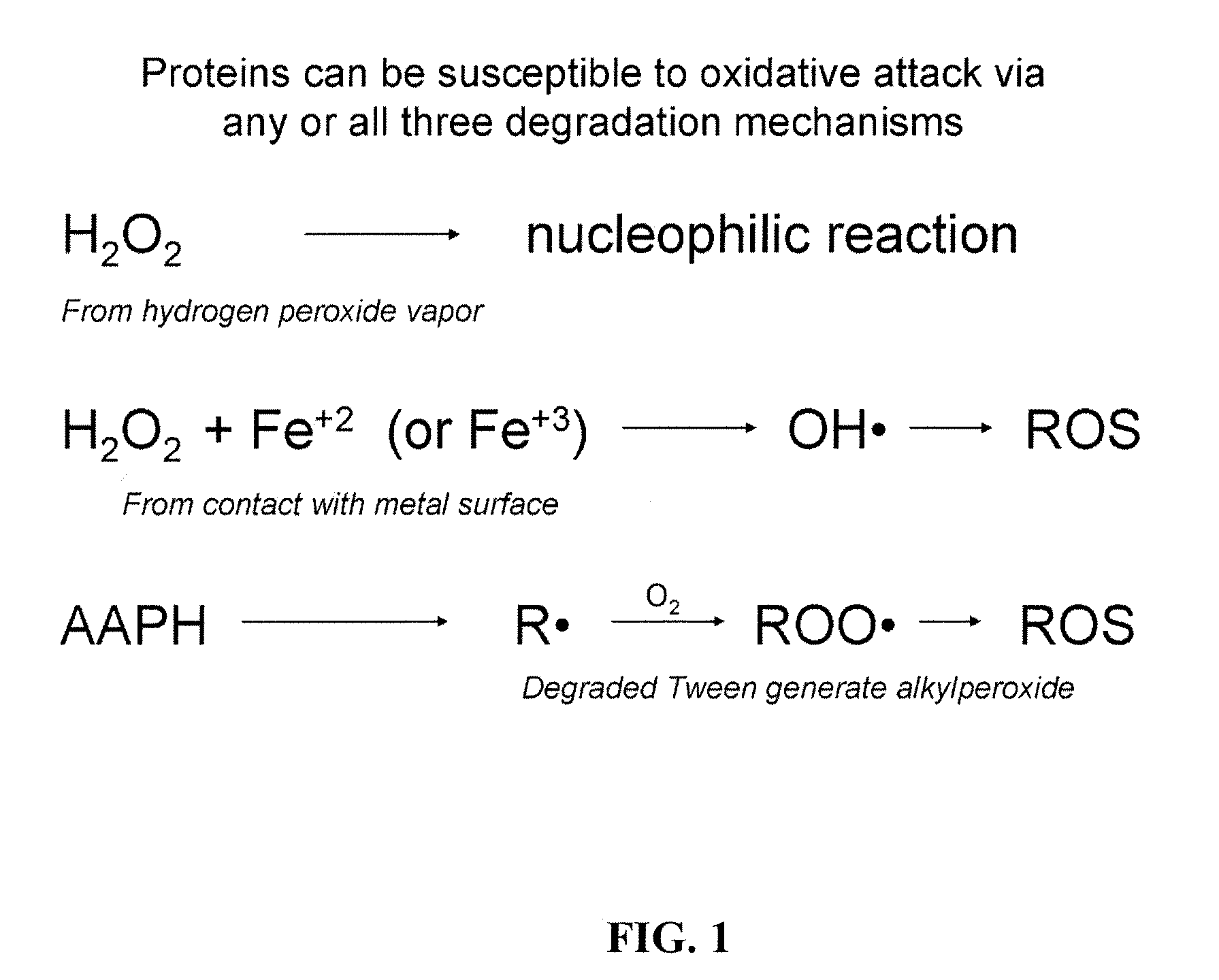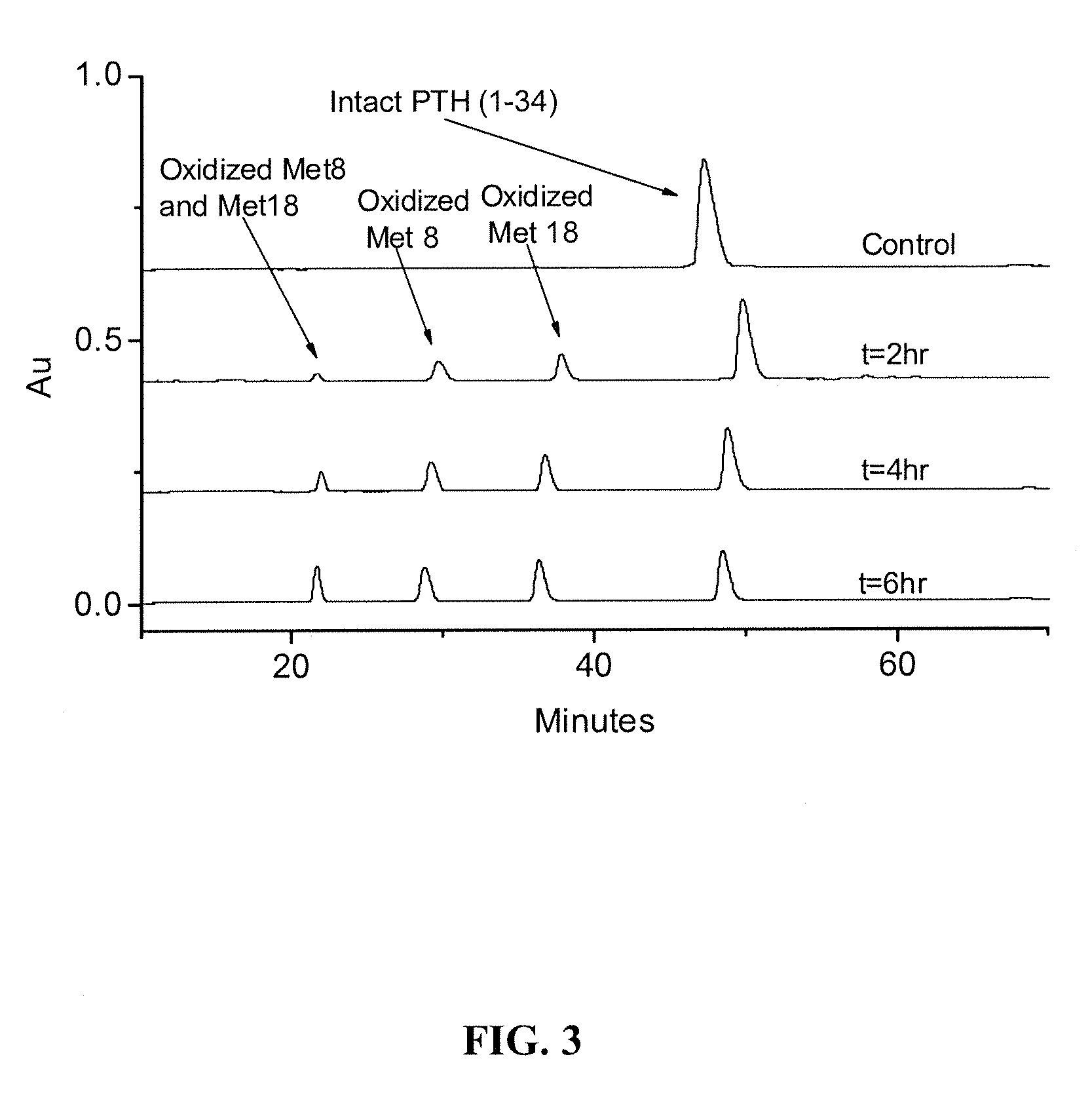Compositions and methods for the prevention of oxidative degradation of proteins
a technology of oxidative degradation and proteins, applied in the direction of antibody medical ingredients, peptide sources, extracellular fluid disorders, etc., can solve the problems of reducing affecting the stability and potency of proteins, so as to achieve effective curtailing of free radical mediated oxidation, prolong the shelf life of products, and increase the resistance to oxidation
- Summary
- Abstract
- Description
- Claims
- Application Information
AI Technical Summary
Benefits of technology
Problems solved by technology
Method used
Image
Examples
example 1
A Study of Protein Oxidation: Methionine and Tryptophan as Effective Stabilizers Against Oxidative Degradation Mechanisms
[0099]This example illustrates the use of tryptophan alone and in combination with methionine to prevent oxidation of antibodies and proteins.
Material:
[0100]AAPH (2,2′-azobis(2-amidinopropane)dihydrochloride) (lot #D00024287) was purchased from CalBiochem (Gibbstown, N.J.). Parathyroid hormone (1-34) (SVSEIQLMHNLGKHLNSMERVEWLRKKLQDVHNF, lot #U07046A1) was purchased from American Peptide Company (Sunnyvale, Calif.). In this report, it is simply referred as PTH.0 L-Methionine and EDTA disodium (lot #E05643) were purchased from J. T. Baker (Phillipsburg, N.J.). Sodium acetate, ammonium acetate, H2O2, t-BHP, L-Tryptophan (lot #1152333), and ferric chloride hexahydrate (lot #53H0619) were purchased from Sigma-Aldrich (St. Louis, Mo.). Ferrous chloride tetrahydrate (lot #NA1759) was purchased from EMD (Gibbstown, N.J.). Mannitol (G10303, lot #139476)...
PUM
| Property | Measurement | Unit |
|---|---|---|
| temperature | aaaaa | aaaaa |
| concentration | aaaaa | aaaaa |
| concentration | aaaaa | aaaaa |
Abstract
Description
Claims
Application Information
 Login to View More
Login to View More - R&D
- Intellectual Property
- Life Sciences
- Materials
- Tech Scout
- Unparalleled Data Quality
- Higher Quality Content
- 60% Fewer Hallucinations
Browse by: Latest US Patents, China's latest patents, Technical Efficacy Thesaurus, Application Domain, Technology Topic, Popular Technical Reports.
© 2025 PatSnap. All rights reserved.Legal|Privacy policy|Modern Slavery Act Transparency Statement|Sitemap|About US| Contact US: help@patsnap.com



